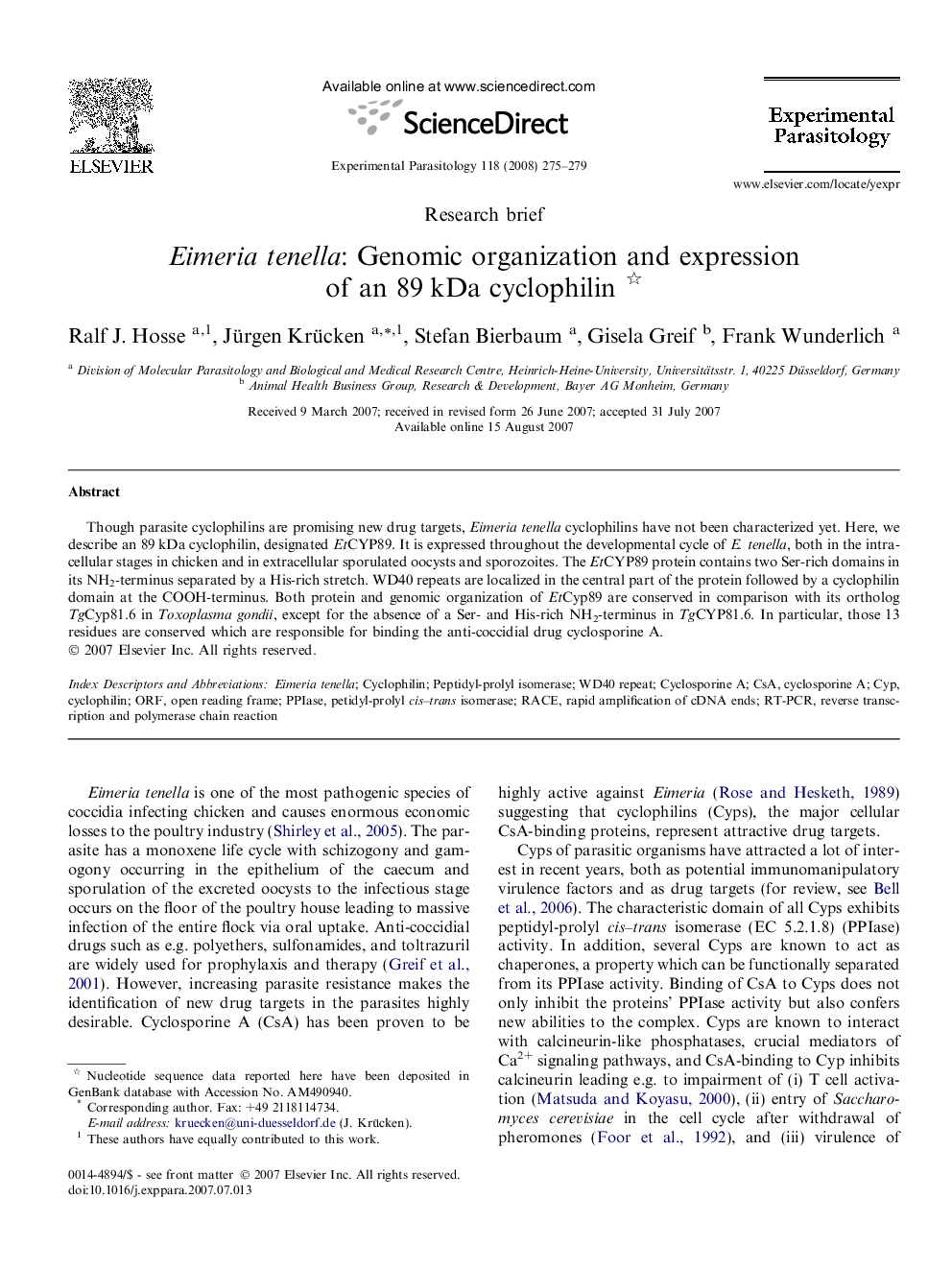| Article ID | Journal | Published Year | Pages | File Type |
|---|---|---|---|---|
| 4371841 | Experimental Parasitology | 2008 | 5 Pages |
Though parasite cyclophilins are promising new drug targets, Eimeria tenella cyclophilins have not been characterized yet. Here, we describe an 89 kDa cyclophilin, designated EtCYP89. It is expressed throughout the developmental cycle of E. tenella, both in the intracellular stages in chicken and in extracellular sporulated oocysts and sporozoites. The EtCYP89 protein contains two Ser-rich domains in its NH2-terminus separated by a His-rich stretch. WD40 repeats are localized in the central part of the protein followed by a cyclophilin domain at the COOH-terminus. Both protein and genomic organization of EtCyp89 are conserved in comparison with its ortholog TgCyp81.6 in Toxoplasma gondii, except for the absence of a Ser- and His-rich NH2-terminus in TgCYP81.6. In particular, those 13 residues are conserved which are responsible for binding the anti-coccidial drug cyclosporine A.
